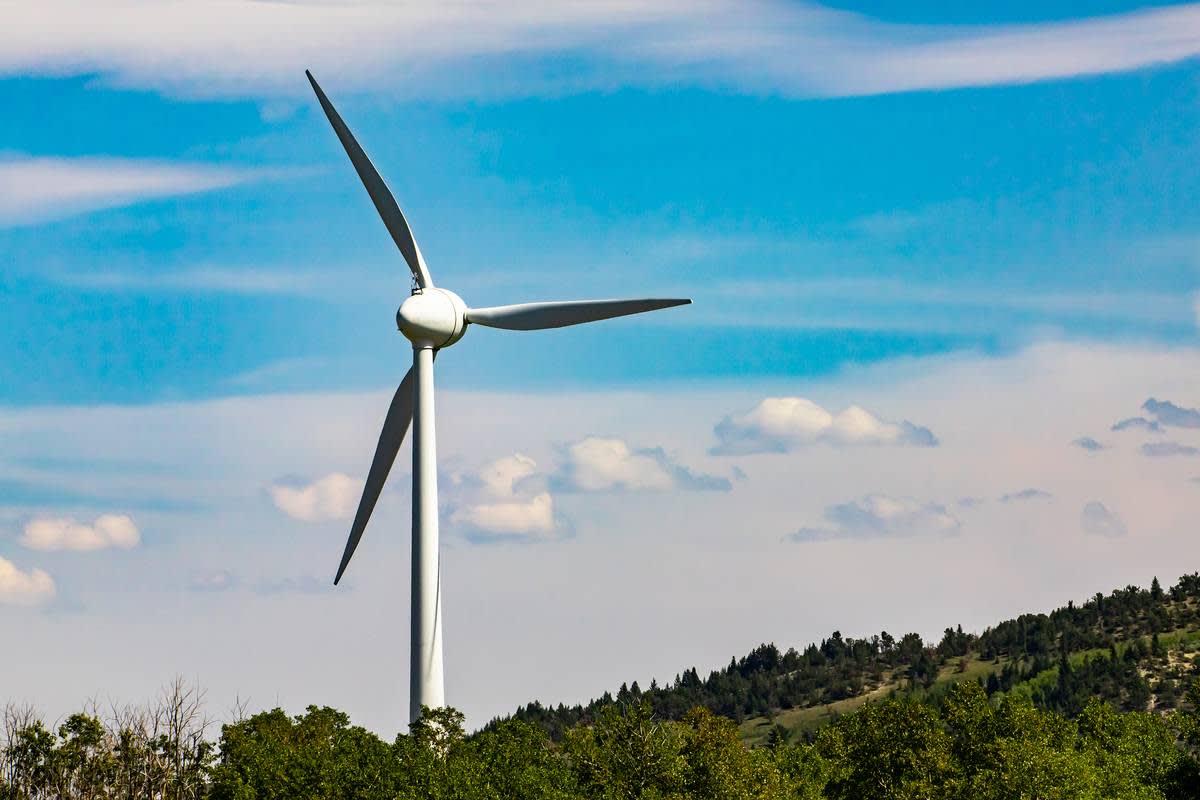Small-scale wind in the UK: How to install a wind turbine and set up a power purchase agreement
Installing wind turbines can be an attractive way for your business to generate renewable power, for your own use as well as the wider needs of the UK. Any surplus energy can be sold to the grid and serves as a beneficial source of income to you.

The advantages of wind turbines
Wind turbines allow us to harness a limitless natural resource to generate renewable electricity. Harnessing your own production could help you reduce your business’s carbon emissions and at the same time meet any sustainability goals. They could also help cut the effective unit price of the electricity you consume at a time of historically very high costs. Ultimately, the investment could allow your business to sell surplus power to the grid and in the process attract a new income stream.
Why choose wind over solar?
Solar PV panels on a typical roof generate modest amounts of power that might be sufficient to run small pieces of equipment or contribute a limited amount of heating, but no more. For more meaningful amounts of solar power, this necessitates setting aside significant land areas. For example, large-scale solar farms may be measured in the hundreds of acres.
In contrast, and taking into account access paths, even the largest free-standing wind turbines occupy only a small area compared to solar. The surrounding acreage is left available for more widespread farming uses and not simply grazing that typifies solar farms.
It might also be that the land your business occupies is simply better suited for wind than solar. For example, hilly land with high levels of wind might be more suitable for turbines than for a solar farm.
Installing wind turbines may be a logical decision for your business, but it’s still a major investment. And there are a number of steps you need to take before you’ll be ready to make the decision.
9 simple steps to install a wind turbine
1. Choose where you want to site your wind turbine
Check that the area where you want to site your wind turbine is appropriate and not too near trees or tall buildings. Grid access and planning consent will be key considerations and are considered further below.
2. Make sure there’s enough wind
You’ll probably need average wind speeds of at least 5 metres per second in your area to make a turbine a worthwhile investment.
You can find information about local wind speeds (Scotland only) from the Energy Saving Trust. Or you may want to monitor speeds with a wind gauge.
3. Decide which kind of wind turbine you want
Free-standing wind turbines tend to be larger and capable of producing more electricity. In fact, they can be more than 75 metres tall. Larger turbines naturally require more land at the point of construction; a 2-megawatt (MW) machine needs around half a square kilometre. However, once the build phase is complete, the majority of this becomes available for productive land use once again.
4. Go solo or with a developer
Choose whether you want to complete this project on your own or together with a developer. Working with a developer may reduce your financial costs but is also likely to impact your financial returns.
5. Get planning permission
If you decide that your site looks appropriate for wind investment, you’ll then need to apply for planning permission. This step may be quite drawn out with a decision needing to reflect environmental factors and the views of neighbours as well as other stakeholders.
6. Prepare your site
There are a number of preparations required ahead of a turbine installation, some of which will naturally vary in their demands dependent on the size of turbine. Foundations are key and require significant amounts of steel and concrete. Extensive trenching will also be required for electrical cables.
7. Complete your wiring
Once your turbine is standing, you’ll need to complete the wiring too. This may typically involve connecting the direct current (DC) output from your wind turbine to the control box and the inverter. The alternating current (AC) output will then be connected to your business energy supply with any surplus to your requirement leaving the site to the wider electricity network.
8. Connect to the grid
You’ll need to have contacted your local District Network Operator (DNO) at an early stage and enter a connection agreement at the point of turbine commissioning.
9. Sell your surplus electricity
If you’re working with a partner, you may want to arrange to sell any electricity your business generates but doesn’t need through them. Alternatively, approach an electricity supplier that offers export products and tariffs through a Power Purchase Agreement (PPA).
Bear in mind that some providers have minimum capacity thresholds, so be sure to ask.
At Drax, we offer market-leading PPAs for generators over 30kW capacity of all sizes. This allows you to get your electricity to market at a highly competitive rate, backed up with consistently outstanding service.
To find out more about how you can earn money from generating electricity, download our guide using the button below.
Download guideDisclaimer
We’ve used all reasonable efforts to ensure that the content in this article is accurate, current, and complete at the date of publication. However, we make no express or implied representations or warranties regarding its accuracy, currency or completeness. We cannot accept any responsibility (to the extent permitted by law) for any loss arising directly or indirectly from the use of any content in this article, or any action taken in relying upon it.


